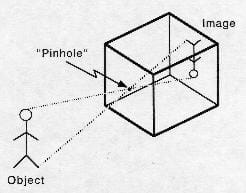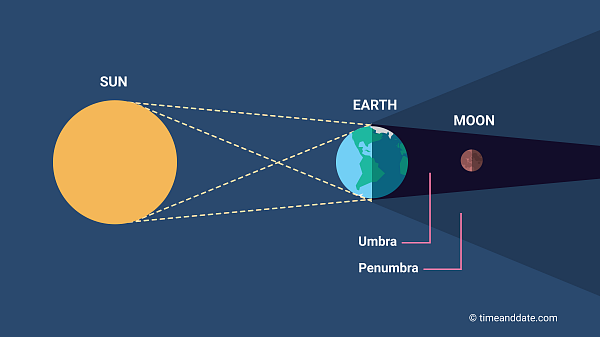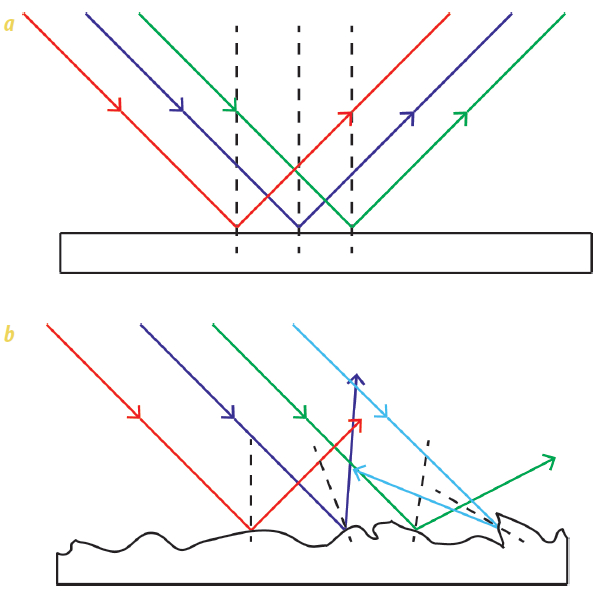Light travels in a straight line and all wavelengths of light travel through a vacuum at the same speed ($3\times 10 ^8\ ms^{-1}$). Because light travels in a straight line we have phenomena such as shadows and eclipses and devices such as pinhole cameras
Credits: TeachEngineering
Credits: timeanddate
Reflection of light
Reflection is the wave phenomenon whereby light bounces off an object. There are two types of reflection:
- Specular reflection where light bounces off of a smooth surface in a uniform manner. This type of reflection happens on mirrors and other reflective surfaces where the image is visible
- Diffuse reflection where light is scattered as it bounces off of a rough surface. Rough surfaces such as walls reflect the incident light in many directions and the image becomes unrecognizable
Credits: American Laboratory
Mission details
Which of the diagrams above depicts diffuse reflection? Which shows specular reflection?
The laws of reflection
- The incident ray, the normal to the surface of reflection and the reflected ray all lie in the same plane
- The angle of incidence is equal to the angle of reflection: $$ \begin{equation}\begin{aligned} angle\ of\ incidence&=angle\ of\ reflection\\ \theta_i &= \theta_r\\ \end{aligned}\end{equation} $$
Credits: BCcampus
IMPORTANT: When measuring the angle of incidence and the angle of reflection, we always use the normal line (the line perpendicular to the surface) as one arm of the angle and the line used to represent the incident ray or the reflected ray respectively as the other arm.
Mock lab
- Follow the link here
- Select ‘Intro’
- Align the protractor vertically with the broken line (the normal) and horizontally with the boundary between the air and the water
- Turn on the laser
- Try different angles of incidence and measure and record the respective angles of reflection, ignoring the light ray that passes from the air into the water




